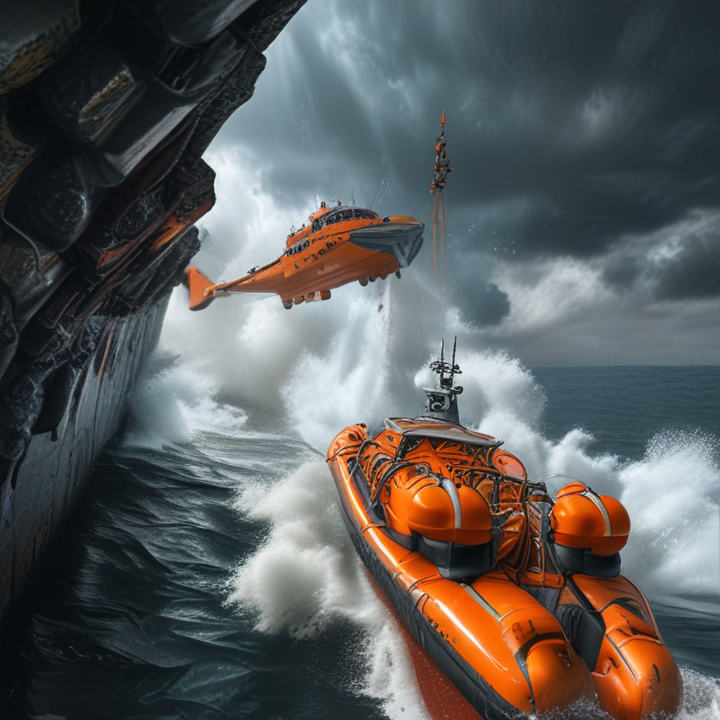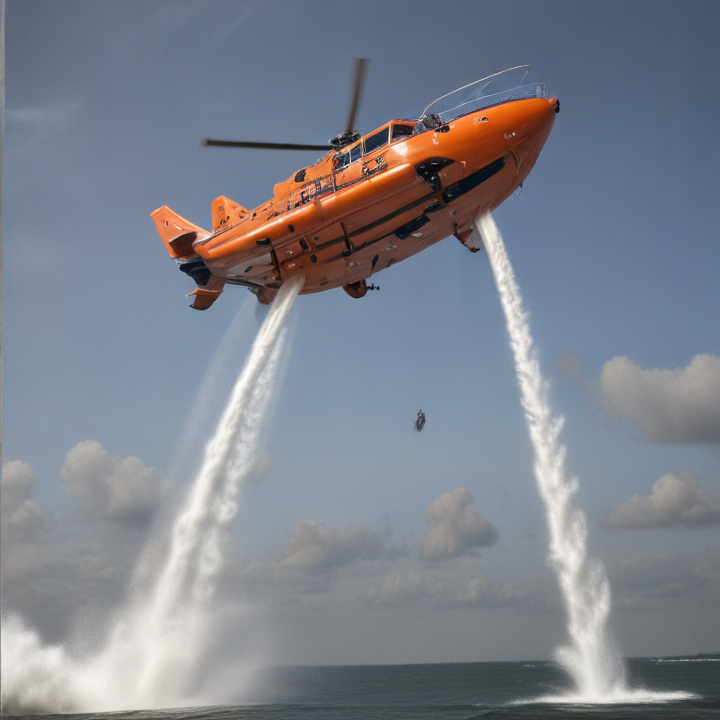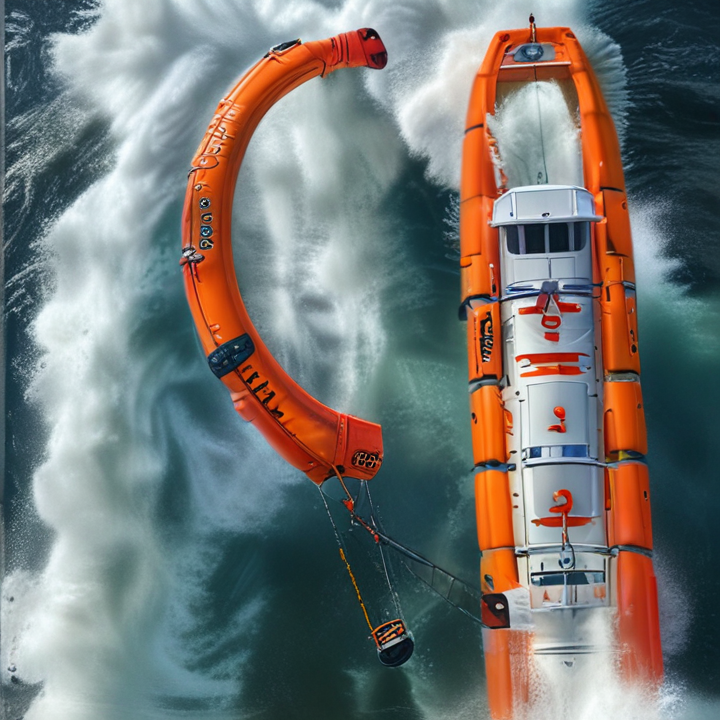freefall lifeboats Safety Certifications
Freefall lifeboats are safety vessels designed to be rapidly deployed from a ship in emergencies. They must meet stringent safety certifications to ensure their reliability and effectiveness. Key certifications include:
1. International Maritime Organization (IMO) Standards: Freefall lifeboats must comply with the Safety of Life at Sea (SOLAS) Convention, specifically Chapter III, which outlines life-saving appliances and arrangements. The IMO’s Maritime Safety Committee (MSC) also provides detailed guidelines, such as MSC.81(70), which includes testing and approval requirements.
2. Marine Equipment Directive (MED): In Europe, the MED, often referred to as the “Wheelmark” certification, ensures that marine equipment, including freefall lifeboats, meets safety standards set by the EU. This certification confirms compliance with SOLAS and other international safety standards.
3. Classification Societies: Organizations such as Lloyd’s Register (LR), Det Norske Veritas (DNV), American Bureau of Shipping (ABS), and Bureau Veritas (BV) provide additional certification. These societies conduct rigorous tests to verify the structural integrity, buoyancy, and launching mechanisms of freefall lifeboats.
4. National Authorities: Individual countries may have specific certifications that lifeboats must meet to be approved for use in their waters. For instance, the U.S. Coast Guard (USCG) has its own set of standards and approvals.
5. ISO Standards: The International Organization for Standardization (ISO) has standards relevant to lifeboats, such as ISO 9001 for quality management systems, which ensures consistent manufacturing quality.
Achieving these certifications involves comprehensive testing, including drop tests to simulate freefall deployment, buoyancy and stability assessments, and checks on onboard equipment like radios, life vests, and first aid kits. These certifications ensure that freefall lifeboats are capable of performing effectively in emergency situations, providing a critical safety measure for maritime operations.
List Reference Technical Parameters of “freefall lifeboats”
Freefall lifeboats are essential safety equipment on ships and offshore platforms, designed to rapidly and safely evacuate personnel in emergencies. Below are key technical parameters that define these lifeboats:
1. Length and Capacity:
– Typically range from 5 to 15 meters in length.
– Designed to carry 20 to 80 persons, depending on size and configuration.
2. Weight:
– Varies between 2,000 to 10,000 kilograms (unloaded).
– Loaded weight can exceed 15,000 kilograms, depending on capacity.
3. Drop Height:
– Certified to be launched from heights up to 20 to 30 meters above water level.
– Some models can handle higher drops, subject to specific design and testing.
4. Speed and Acceleration:
– Designed to reach a safe distance from the vessel within seconds after water entry.
– Can achieve speeds of up to 6 knots using onboard propulsion systems.
5. Hull Material:
– Constructed from materials like fiberglass-reinforced plastic (FRP) for durability and buoyancy.
– Often includes additional coatings for resistance to fire and corrosion.
6. Propulsion:
– Typically equipped with diesel engines.
– Engines provide a minimum of 6 hours of continuous operation, ensuring maneuverability after launch.
7. Safety Features:
– Enclosed design to protect occupants from harsh environments.
– Equipped with self-righting capability to ensure correct orientation upon water entry.
– Fitted with seat belts, grab rails, and secure seating to protect occupants during freefall.
8. Navigation and Communication:
– Includes basic navigation equipment such as a compass.
– Equipped with emergency communication devices like VHF radios and EPIRBs (Emergency Position Indicating Radio Beacons).
9. Lifesaving Equipment:
– Stocked with emergency supplies including fresh water, food rations, first aid kits, and survival suits.
– Includes pyrotechnics such as flares for signaling.
These parameters ensure that freefall lifeboats provide rapid, safe, and reliable evacuation in emergencies, conforming to international maritime safety standards.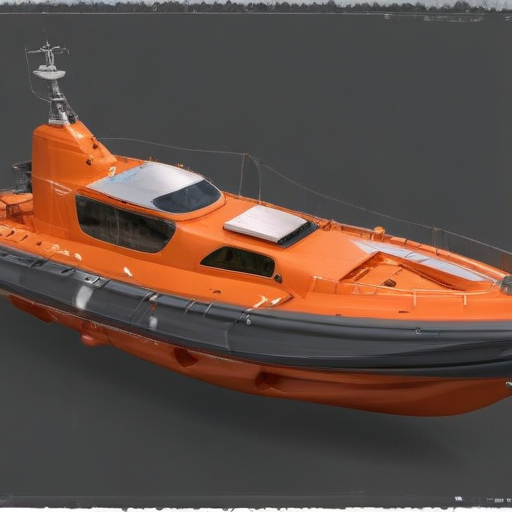
List Product features of “freefall lifeboats”
Freefall lifeboats are designed to enhance the safety and efficiency of maritime evacuations. Here are their key features:
1. Design and Structure: Freefall lifeboats have a streamlined, enclosed design for better aerodynamics and hydrodynamics, allowing them to rapidly enter the water from significant heights without capsizing or flooding.
2. Safety and Stability: They are equipped with self-righting capabilities, ensuring the boat returns to an upright position if it flips over during deployment. Their robust construction includes reinforced hulls to withstand impact forces.
3. Launch Mechanism: These lifeboats use a gravity-based launch system, allowing for quick and reliable deployment even in power outages. The freefall mechanism ensures a rapid descent and immediate distance from the distressed vessel.
4. Capacity and Comfort: They can accommodate a large number of passengers, typically ranging from 30 to 80 individuals. Interiors are designed for passenger safety and comfort, with secure seating, seat belts, and ample space.
5. Propulsion and Navigation: Freefall lifeboats are equipped with diesel engines, providing reliable propulsion and maneuverability. They often include navigation equipment such as compasses, GPS, and communication tools to assist in rescue operations.
6. Survival Equipment: These lifeboats come stocked with essential survival gear, including first aid kits, life vests, thermal blankets, fresh water supplies, and emergency rations. Additional equipment may include distress signals, flares, and fire extinguishers.
7. Environmental Resilience: Constructed to withstand extreme maritime conditions, freefall lifeboats are resistant to saltwater corrosion and can endure high waves, strong winds, and rough seas.
8. Regulatory Compliance: They adhere to international safety standards and regulations, such as those set by the International Maritime Organization (IMO) and the Safety of Life at Sea (SOLAS) conventions, ensuring they meet stringent safety and performance criteria.
These features collectively enhance the efficacy of freefall lifeboats in emergency evacuation scenarios, prioritizing passenger safety and survival.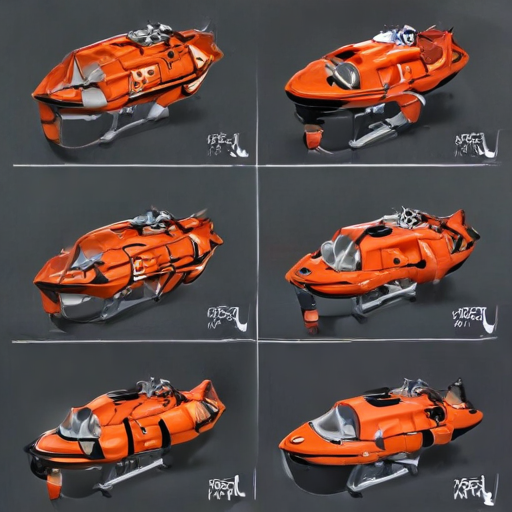
“freefall lifeboats” Warranty and Support
Warranty and Support for Freefall Lifeboats
When purchasing freefall lifeboats, it is crucial to understand the warranty and support options available to ensure the safety and reliability of the equipment. Here are the key aspects to consider:
1. Warranty Coverage:
– Duration: Typically, manufacturers offer a warranty period ranging from 1 to 5 years. This period covers defects in materials and workmanship.
– Inclusions: The warranty generally includes repair or replacement of defective parts, labor costs, and sometimes transportation costs for the lifeboat to the service center.
– Exclusions: Normal wear and tear, misuse, unauthorized modifications, and damage caused by accidents or natural disasters are usually not covered.
2. Support Services:
– Technical Support: Manufacturers provide technical support to address any operational issues or questions. This can include phone support, email support, and sometimes on-site assistance.
– Maintenance and Inspection: Regular maintenance and inspection services are often available to ensure the lifeboat remains in optimal condition. These services may be included in the warranty or offered as part of a service contract.
– Training: Comprehensive training programs for operators and maintenance personnel are often provided. This ensures that the crew is well-versed in the proper use and upkeep of the lifeboat.
– Spare Parts Availability: Manufacturers typically guarantee the availability of spare parts for a certain number of years after the purchase. This ensures that any necessary repairs can be performed without delay.
3. Extended Warranty and Service Contracts:
– Extended Warranty: Some manufacturers offer extended warranty options for an additional fee. This can provide peace of mind beyond the standard warranty period.
– Service Contracts: Service contracts can be purchased to cover regular maintenance, inspections, and emergency repairs. These contracts can be tailored to meet the specific needs of the vessel and its operations.
Understanding the warranty and support options for freefall lifeboats is essential for ensuring the safety and longevity of the equipment. Always review the terms and conditions provided by the manufacturer to make an informed decision.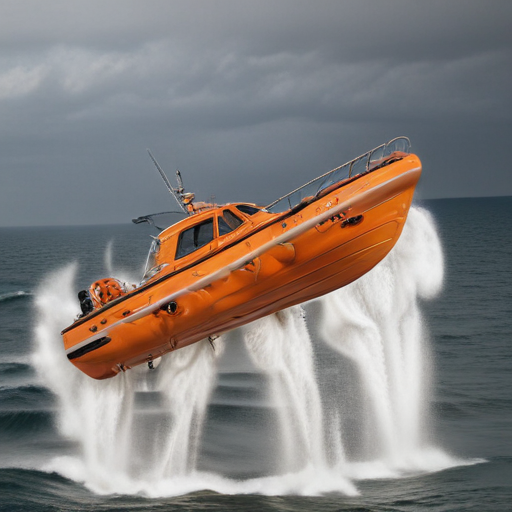
List “freefall lifeboats” FAQ
Freefall Lifeboats FAQ
1. What is a freefall lifeboat?
A freefall lifeboat is a type of lifeboat designed to be launched by freefall, meaning it drops into the water from a height, allowing for rapid evacuation.
2. How does a freefall lifeboat work?
The lifeboat is released from a ramp, allowing gravity to propel it into the water. This method ensures quick deployment and minimizes exposure to danger during launch.
3. What are the advantages of freefall lifeboats?
– Rapid Deployment: Quick and efficient launch.
– Safety: Reduces exposure to fire, smoke, and other hazards.
– Simplicity: Fewer mechanical parts compared to traditional davit-launched lifeboats.
4. Are freefall lifeboats safe?
Yes, they are designed to be highly safe, with rigorous testing to ensure they can withstand the impact of hitting the water and provide a secure environment for occupants.
5. What is the capacity of a freefall lifeboat?
Capacities vary, but they typically range from 20 to 70 people, depending on the design and size of the lifeboat.
6. How are freefall lifeboats maintained?
Regular inspections and maintenance are required, including checks on the hull, release mechanisms, and safety equipment. Annual drills and training are also conducted to ensure readiness.
7. Can freefall lifeboats be used in all weather conditions?
They are designed to be used in a wide range of conditions, including rough seas. However, extreme weather may still pose challenges.
8. What training is required for using a freefall lifeboat?
Crew members must undergo specific training, including theoretical knowledge and practical drills, to ensure they can safely operate and evacuate using the lifeboat.
9. How are freefall lifeboats stored on a vessel?
They are typically stored on a ramp at the stern of the vessel, ready for immediate deployment.
10. What regulations govern the use of freefall lifeboats?
International Maritime Organization (IMO) regulations, specifically the SOLAS (Safety of Life at Sea) convention, set the standards for lifeboat design, maintenance, and operation.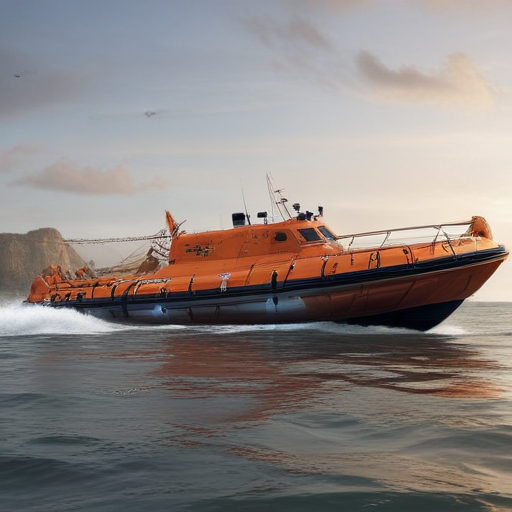
Top 10 FAQ with answer about freefall lifeboats for Buyer Sourcing from China
Top 10 FAQ about Freefall Lifeboats for Buyer Sourcing from China
1. What are freefall lifeboats?
Freefall lifeboats are designed for rapid deployment, dropping freely from a ship into the water, ensuring quick evacuation in emergencies.
2. What standards do Chinese freefall lifeboats adhere to?
Chinese manufacturers typically comply with SOLAS (Safety of Life at Sea) regulations and the International Maritime Organization (IMO) standards, ensuring global safety compliance.
3. How do I verify the quality of freefall lifeboats from China?
Look for certifications like CCS (China Classification Society), DNV-GL, or ABS. Request quality inspection reports and conduct factory audits if possible.
4. What is the typical lead time for manufacturing and delivery?
Lead times vary but generally range from 60 to 90 days. Custom orders or large quantities may extend this timeframe.
5. What are the key features to consider when selecting a freefall lifeboat?
Key features include capacity, drop height, engine type, material durability, and compliance with international standards.
6. Can Chinese manufacturers provide customization for specific requirements?
Yes, many manufacturers offer customization options to meet specific needs, such as size, seating capacity, and equipment.
7. What are the payment terms commonly offered?
Payment terms often include a 30% deposit with the balance paid before shipment. Letter of Credit (L/C) and T/T (Telegraphic Transfer) are common payment methods.
8. How is after-sales service and support handled?
Reputable manufacturers offer after-sales support, including spare parts supply, maintenance services, and technical assistance.
9. What is the warranty period for freefall lifeboats?
Warranties typically range from 1 to 2 years, covering manufacturing defects. Some manufacturers may offer extended warranties upon negotiation.
10. How can I ensure the safe transportation of freefall lifeboats?
Manufacturers usually handle the packaging and transportation, ensuring compliance with international shipping standards. Ensure the contract specifies responsibilities for shipping and handling to avoid damage during transit.
By considering these FAQs, buyers can make informed decisions when sourcing freefall lifeboats from China.

